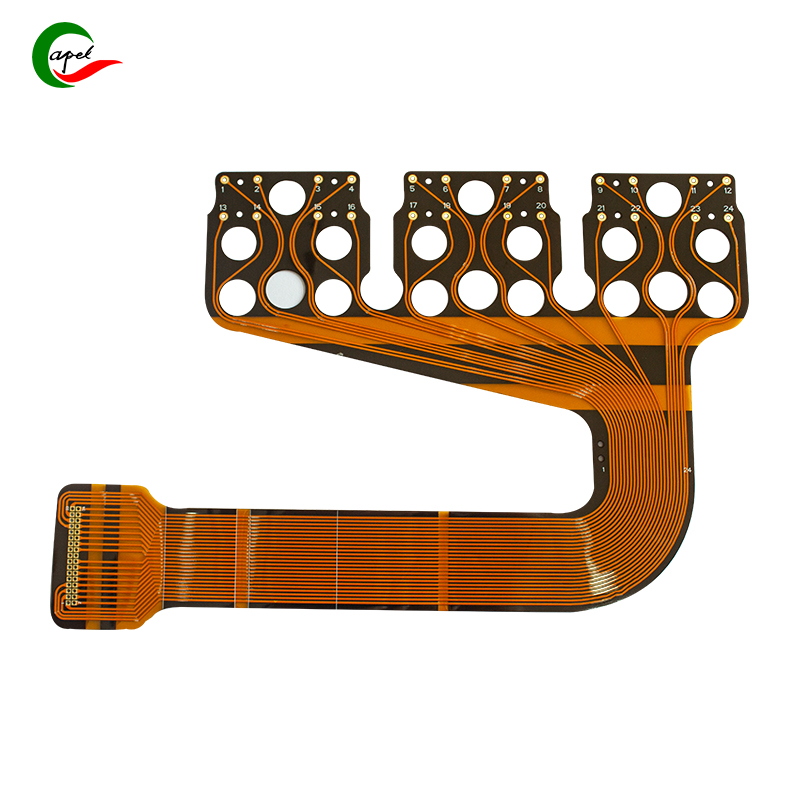Date: 2025-10-17
Working with ultra-thin flexible PCB substrates demands careful attention to detail. Through our experience developing miniature medical devices and wearable sensors, we've learned that substrate tearing during cutting isn't just an inconvenience - it can completely derail production timelines and significantly impact yields.
Understanding the Unique Challenges of Ultra-Thin Materials
The fundamental issue with substrates ≤25μm thick comes down to their mechanical limitations. Standard polyimide at 25μm thickness possesses substantially lower tensile strength compared to thicker variants - we've measured it at approximately 150MPa, which means even minimal handling forces can cause damage.
The edge stress phenomenon is particularly problematic. Traditional cutting methods create concentrated stress points that easily propagate through these delicate materials. Additionally, ultra-thin PI exhibits poor dimensional stability when exposed to thermal changes or mechanical stresses, making consistent cutting results challenging to achieve.
Selecting the Appropriate Cutting Methodology
Based on our testing across multiple projects, we recommend different approaches depending on your precision requirements and production volume:
Laser cutting has become our preferred method for high-precision applications. We typically use UV lasers at 5-10W power with cutting speeds of 20-30mm/s. The key parameter we've found is maintaining a focal point 0.1-0.2mm above the substrate surface - this small adjustment has significantly improved our edge quality.
For volume production, die cutting remains viable but requires careful parameter optimization. We use blades with 30°-45° angles rather than standard 90° edges and maintain pressure below 0.3MPa. The critical factor is maintaining a precise die gap of 0.02-0.03mm to match the substrate thickness.
Critical Process Parameters for Success
Even with the right equipment, parameter optimization makes the difference between success and failure:
For laser processes, we've found that lower power combined with higher speed produces better results than aggressive high-power settings. The 10W laser at 20mm/s configuration has proven optimal in our applications, minimizing thermal damage to the delicate PI edges.
Air assist pressure requires careful control - we maintain 0.1-0.2bar to clear debris without disturbing the substrate positioning. Higher pressures literally blow these lightweight materials out of alignment.
In die cutting applications, blade maintenance becomes crucial. We replace blades after 5,000 cycles for ultra-thin materials - significantly more frequently than for standard thickness substrates. The gradual dulling of blades creates tearing issues long before they affect thicker materials.
Substrate Stabilization Techniques
Proper material fixation eliminates the majority of tearing issues:
We use low-tack adhesive tapes (specifically 3M 9448A) to mount substrates to rigid carriers. This approach provides the necessary stability during cutting while allowing clean removal afterward.
Vacuum tables work well for laser processing, but the hole size matters significantly. We use tables with 0.2mm diameter holes - larger openings can create localized stress points that lead to tearing.
Surface preparation is often overlooked but critically important. We clean substrates with IPA using lint-free wipes to remove contaminants that could interfere with adhesion or create friction points during cutting.
Post-Processing Considerations
The care taken after cutting completion is equally important:
We remove substrates from carriers by peeling at a 180° angle - this flat removal technique avoids the stress concentrations that occur with vertical peeling.
Deburring requires gentle approaches. We've successfully used soft bristle brushes (similar to cosmetic brushes) to remove microscopic debris without damaging the delicate cut edges.
Storage and handling procedures must accommodate the material's fragility. We store cut substrates between layers of anti-static polyethylene film to prevent friction damage that can occur when materials rub against each other.
Lessons from Production Experience
Through trial and error, we've identified several key practices:
We completely avoid die cutting for substrates thinner than 15μm - the mechanical pressures involved simply cannot be adequately controlled for these extremely delicate materials.
Pressure calibration cannot be rushed. We conduct thorough testing with 5-10 sample substrates whenever we start a new production run, gradually increasing pressure from 0.1MPa until we achieve clean cuts.
Blade maintenance follows a strict schedule. The gradual degradation of cutting edges creates tearing problems long before the damage becomes visually apparent.
By implementing these practices, we've consistently achieved yields exceeding 95% even with the most challenging ultra-thin materials. The approach has proven reliable across medical implants, high-density wearable sensors, and miniaturized consumer electronics applications.
related link:
Capel manufacturing PCBs since 2009. Professional technology and high-precision Printed Circuit Boards involved in Medical, IOT, UAV, Aviation, Automotive, Aerospace, Industrial Control, Artificial Intelligence, Consumer Electronics etc..